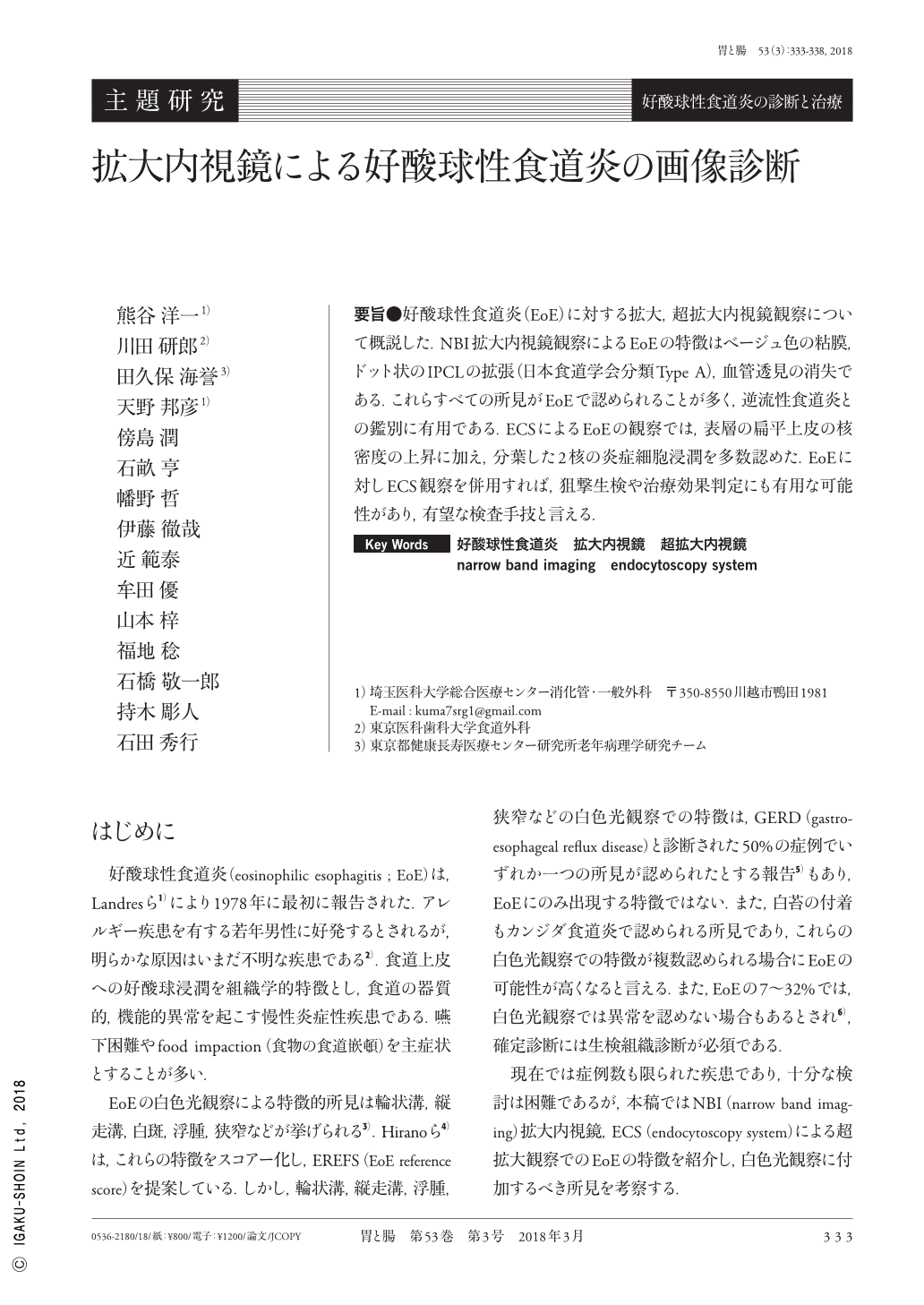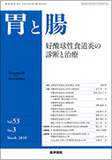Japanese
English
- 有料閲覧
- Abstract 文献概要
- 1ページ目 Look Inside
- 参考文献 Reference
要旨●好酸球性食道炎(EoE)に対する拡大,超拡大内視鏡観察について概説した.NBI拡大内視鏡観察によるEoEの特徴はベージュ色の粘膜,ドット状のIPCLの拡張(日本食道学会分類Type A),血管透見の消失である.これらすべての所見がEoEで認められることが多く,逆流性食道炎との鑑別に有用である.ECSによるEoEの観察では,表層の扁平上皮の核密度の上昇に加え,分葉した2核の炎症細胞浸潤を多数認めた.EoEに対しECS観察を併用すれば,狙撃生検や治療効果判定にも有用な可能性があり,有望な検査手技と言える.
The observation of EoE(eosinophilic esophagitis)using NBI-ME(narrow band imaging magnifying endoscopy)reported three features:beige mucosa, dotted IPCLs(intrapapillary capillary loops)Type A according to the Japan esophageal society classification, and absent cyan vessels. All of these three features were reported to be found in the majority of EoE cases. Thus, we consider these NBI-ME-recorded features beneficial in distinguishing EoE from the gastro-esophageal reflux disease.
Using ECS(endocytoscopy system), massive infiltration of the inflammatory cells with bi-lobed nuclei along with slight increase in the nuclear density of the surface squamous cells was observed in EoE(Type 2 of our classification). Thus, ECS may be useful in performing target biopsy for the diagnosis of EoE. Further, it may also be useful for evaluating the therapeutic effects in EoE.

Copyright © 2018, Igaku-Shoin Ltd. All rights reserved.


